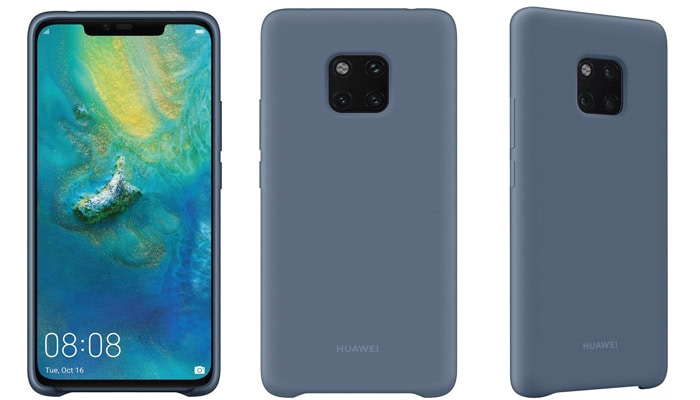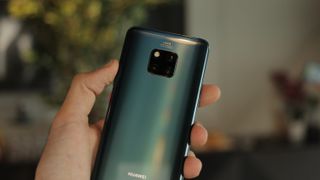Huwau mate 20 pro camera beast
Huawei’s Mate 20 Pro the beast is return with three camera
In a year where every new phone raises the bar a bit higher that its predecessor, the Huawei Mate 20 Pro has just enough premium features to stand out from the crowd. It’s a powerful smartphone with three rear cameras and a modicum of distinctive style, but its bold signature is a handful of neat tricks you won’t see on other phones until next year.
In many ways, it’s a superlative device that gamely competes with the Samsung Galaxy Note 9, Google Pixel 3 and iPhone XS. But its top-tier specs and features demand a top-tier price: the Mate 20 Pro costs £899 (AU$1,599, €1,049, about $1,150), making it one of a couple this year to break the four-digit price point in the US.
Inevitably, then, sitting as it does in that top-tier price bracket, the Mate 20 Pro is subject to the question: is it worth all that money?
- Interested in the cheaper of the two new Mates? Read our in-depth Huawei Mate 20 review
The short answer is yes, if your only scale is what other current phones have to offer. Whatever else happened in 2018, phone innovation didn’t, which makes the Mate 20 Pro’s minor improvements and additions more impressive.
But let’s delve into the specifics to see why this is pretty great phone perhaps deserves its dizzyingly high price tag.
Mate 20 Pro release date and price
The Mate 20 Pro release date is October 26 in the UK, and November 1 in Australia, it costs £899, €1,050, AU$1,599 (about $1,150). We haven’t heard release dates for other regions, nor official prices, and there are no plans to release it in the US.
There’s only one version of the Pro (for now) with 6GB RAM and 128GB of storage. But the other versions in the Mate 20 line – like the 7.2-inch screen Mate 20 X and 8GB RAM and up to 512GB Porsche Edition – offer different performance and form factors if you want a slightly different take on this already-performance-driven smartphone.
As has been the case with Huawei, don’t expect this flagship phone to hit US shores - unless you buy an unlocked version from overseas and find a carrier that will support it.
Key features
If you missed the Huawei P20 Pro earlier this year, you’re in luck: the Mate 20 Pro is a better version in nearly every way.
Where the P20 Pro had a main camera, 3x zoom telephoto and monochrome lens, the Mate 20 Pro kept the former two and added a color ultra-wide lens. While this may give its predecessor the edge on low-light and nighttime shots, the Mate 20 Pro is no slouch there, and you’ll love having the option to ‘zoom out’ with the ultra-wide.
The Mate 20 Pro inherits the 24MP f/2.0 front-facing camera from the P20 Pro, but expands the front camera suite with more sensors. This stretches its notch to iPhone XS-levels of width, but that’s the price for more dynamic photos unlocking the phone with your face.

Advertisement
At 157.8 x 72.3 x 8.6mm, Huawei’s latest phone is just a couple millimeters bigger (and almost a millimeter thicker) than the P20. That makes its 6.39-inch OLED screen larger, too, with resolution that’s higher than the Google Pixel 3 and slightly better than the Samsung Note 9, at least on paper.
One of the biggest braggable points, of course, is the Kirin 980 processor, which is debuting on the Mate 20 Pro and its sibling devices. It's the first 7nm chip on Android and second in the market after Apple’s formidable A12, which came packed in the iPhone XS and iPhone XS Max.
The Mate 20 Pro’s 6GB of RAM and 128GB of storage haven’t improved from the P20 Pro, though you can expand the storage via a new proprietary “nanoSD” format card to a maximum of 256GB. But if you opt to plug in a nanoSD for more storage, you’ll have to place it in one of the phone’s two SIM slots (cleverly stacked in an over/under tray inserted next to the USB-C port) and give up dual SIM functionality.
These specs are about on par with other flagship smartphones, though the Kirin 980 is speedier than Snapdragon 845 which first appeared in a phone earlier in March. Don’t worry about sapping the battery while you’re putting the new chip through its paces: the Mate 20 Pro comes with a 4,200mAh battery, which lasts as long as you’d think.
The Mate 20 Pro has a couple things other phones today don’t, though they’re more party tricks than market-upending features. The first is something phone fans have been eager to try out: an in-screen fingerprint scanner. In theory, this makes it easier to unlock your phone while it’s resting flat than using a back-mounted fingerprint button or facial recognition.
The second new trick probably won’t get used much, but in a pinch, it’s a godsend: the Mate 20 Pro can wirelessly charge other Qi-charging phones or devices. There’s nothing more heroic than lending a hapless friend some juice when their phone is at death’s door.

Design
Looking at the Mate 20 Pro tells you two things: 1) it likely costs quite a bit of money, and 2) it’s got a signature look – but only from the back. Which isn’t to knock its high-resolution, curved-edge screen and thin-but-wide notch; we’ve just seen them elsewhere before.
Advertisement
The top tier of the smartphone market requires differentiation, and Huawei chose to let its cameras do the talking. The Mate 20 Pro collects all three of its rear-facing cameras and its flash in a slightly-raised block on the phone’s backside. With the rear fingerprint sensor gone, this gives the phone a clean, semi-symmetrical look that’s better in person than in pictures.










No comments